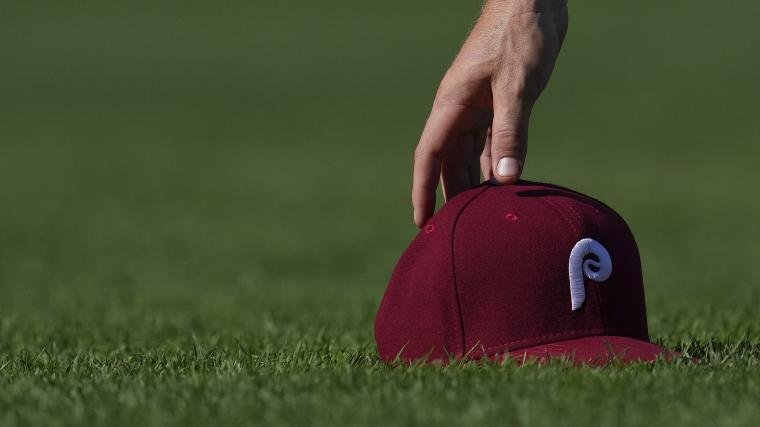The Philadelphia Phillies entered the 2025 season with hopes of building on their successful 2024 campaign, and they’ve gotten off to a strong start, winning their first three series and posting a 7-2 record. A significant factor in their early success has been the performance of Max Kepler, whom they signed to a one-year, $10 million deal during the offseason. Though the signing initially flew under the radar, it’s quickly turned into one of the most impactful moves of the winter.
The Phillies’ outfield depth was a primary concern heading into the offseason, and it was clear that a solution was needed. The team had non-tendered Austin Hays, leaving an open spot in the outfield. With their payroll already stretched thin and no immediate big-name free agents to pursue, the Phillies opted for a short-term investment. Kepler, who spent most of his career with the Minnesota Twins, appeared to be a low-risk option with significant upside, especially if he could stay healthy.
Kepler’s signing represented a gamble for the Phillies. He had dealt with knee injuries that limited him to just 105 games in 2024, and he had never played regularly in left field. Despite this, he showed flashes of brilliance throughout his career. The hope was that a change of scenery and a move to a hitter-friendly ballpark in Philadelphia could unlock his potential. His track record of power-hitting and getting on base made him a worthwhile investment.
The move immediately paid dividends during spring training, where Kepler led all Phillies position players with an impressive 1.175 OPS over 17 games. He showed power and patience at the plate, leading the team in both RBI and home runs, and finished with a team-high 10 walks. His stellar performance in the preseason raised expectations and gave the Phillies’ front office confidence that they had found a key piece to their roster for the upcoming season.
Though spring training success doesn’t always translate to the regular season, Kepler’s solid performance carried over into the early weeks of 2025. His batting average may be a modest .179, but it’s important to consider the context. Kepler leads the team in walks with seven and ranks among the top players on the team in on-base percentage and OPS. His plate discipline has been excellent, and he’s consistently putting together competitive at-bats.
Kepler’s power potential is also evident. His home runs and doubles have come at key moments, helping to drive in runs and keep the Phillies’ offense humming. In a lineup filled with power hitters like Bryce Harper, J.T. Realmuto, and Nick Castellanos, Kepler’s presence adds another layer of protection and balance. A healthy and productive Kepler could turn into a crucial cog for the Phillies’ offense as they continue to chase down their goals for the season.
Another factor working in Kepler’s favor is his ability to stay patient at the plate. He has managed to walk more than strike out so far, a sign of maturity and an understanding of his approach. His ability to work counts and get on base has been a valuable asset for the Phillies, providing opportunities for the power hitters behind him. If Kepler can continue to get on base at a high clip, it will only help improve the overall production of the offense.
Kepler’s defensive transition to left field has also been noteworthy. While he had little experience at the position before this season, he’s adjusted well. His glove work has been solid, and he’s made several key plays in the field, helping to keep opposing offenses at bay. Given the Phillies’ reliance on their starting pitching, having a dependable outfield is critical, and Kepler has contributed to that stability.
The Phillies’ front office had a clear vision when they signed Kepler: bolster the outfield with a low-risk, high-reward player who could offer power and on-base skills. So far, it’s a vision that has come to fruition. Kepler’s contribution has helped the team remain competitive in the early part of the season, and as the season progresses, he could become even more of an integral part of their success.
What makes this signing particularly savvy is the financial flexibility it offers. With Kepler on a one-year deal, the Phillies are not tied to a long-term commitment, and they still have room to adjust if other needs arise later in the season. This gives them the flexibility to make future moves without being bogged down by a big contract. If Kepler continues to perform at a high level, the Phillies could even consider re-signing him for the future, though they will have other options as well.
The key to the Phillies’ success in 2025 lies in maintaining their roster depth. Kepler’s performance, along with contributions from their pitching staff and bench players, gives them a balanced team that can compete with any in the league. The outfield, while not filled with superstars, now has a dependable player in Kepler, who brings both offensive and defensive value to the table.
Looking ahead, the Phillies will need Kepler to stay healthy and maintain his level of play. But even with his early-season struggles at the plate, his patient approach and ability to contribute in other ways suggest that he could break out offensively as the season progresses. If he does, he could end up being a major difference-maker for the team, particularly in the postseason push.
In conclusion, Max Kepler’s signing was one of the most astute moves the Phillies made this offseason. Despite the initial concerns about his health and defensive position, Kepler has quickly proved his worth, providing power, on-base skills, and stability to the Phillies’ lineup. As the season unfolds, the success of this decision will continue to be a critical factor in the team’s success, and if Kepler remains consistent, he could become one of the most valuable players on the roster.
